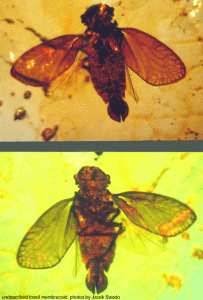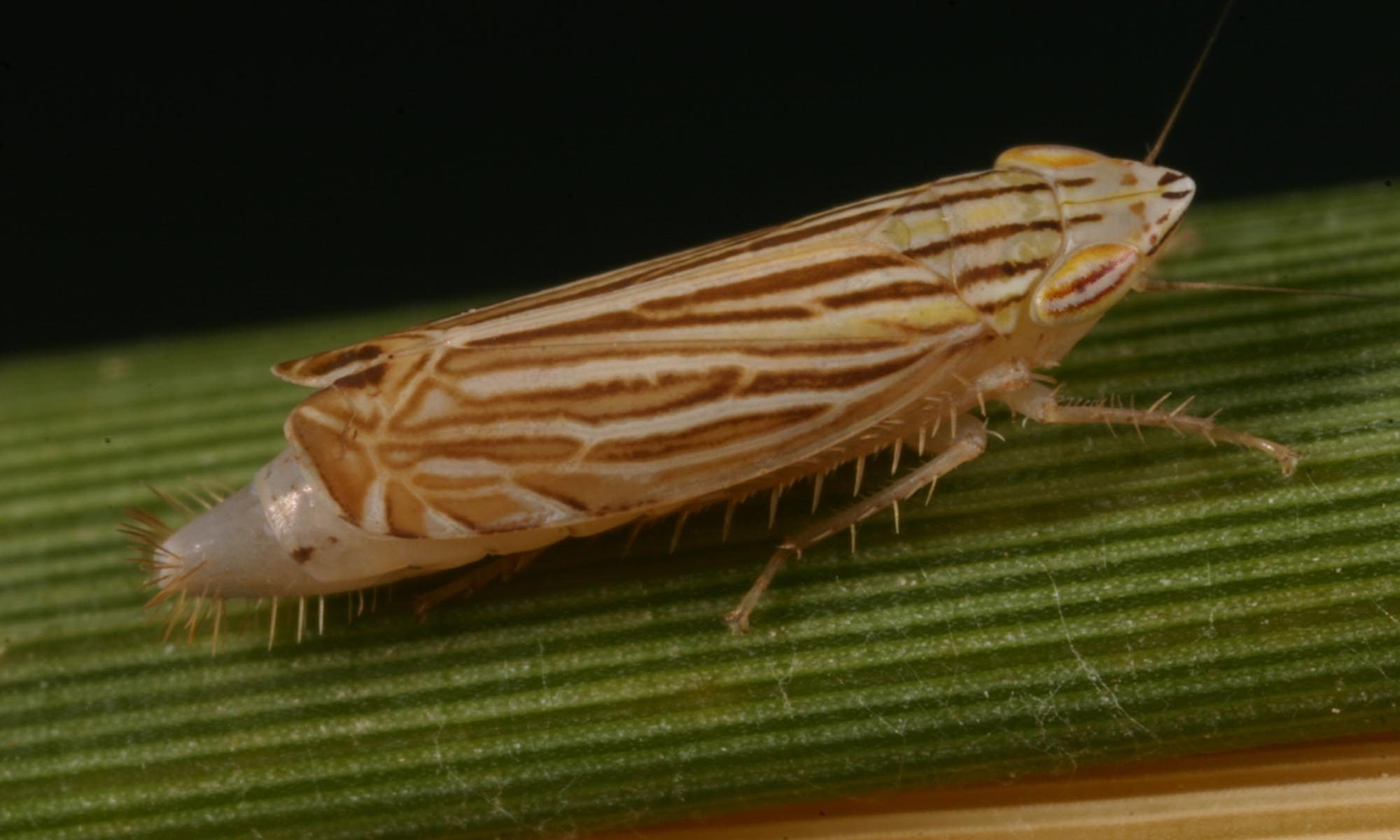This page provides general information on the life-history, distribution, diversity, and ecology of treehoppers.
How many treehoppers are there?
Approximately 3,200 species have been described, but many more are being discovered, especially in tropical rainforests. Recent samples from the rainforest canopy of a small area in the Napo region of Ecuador contain over 700 species, most of which are new to science. Treehoppers are currently classified into three families, 11 subfamilies, 31 tribes and over 600 genera. Click here to see a list of the most recently discovered treehopper species.
How are treehoppers identified?
Most treehopper species can be distinguished by the distinctive shape and color of their pronotum, which often bears spines, bulbs, or other bizarre structures. But be careful–males and females of the same species can sometimes have very different pronotal shapes or colors. In some genera, adults appear to be almost identical externally and must be distinguished by the shape of the male genitalia. A key to tribes and subfamilies is available online. An annotated bibliography of literature useful for identification is also available online.
What are their relatives?
Treehoppers are closely related to leafhoppers. In fact, the best available evidence from morphology and DNA sequences now indicates that treehoppers are really a specialized lineage of leafhoppers.
How old are they?

Individual treehoppers usually live for only a few months, but they belong to a lineage that is at least 40 million years old. Treehopper fossils are extremely rare and nearly all of the fossil species previously thought to represent extinct treehopper species have proven to belong to other groups of insects. The oldest undoubted treehopper fossils are specimens of a few as yet undescribed species from amber found in the Dominican Republic. Unlike the leafhopper fossils known from Dominican amber, which closely resemble modern species, the amber treehoppers differ from modern treehoppers in many respects.
What is their life-cycle?
Treehoppers usually have one or more generations per year. Eggs are laid singly or in masses, either inserted directly into the living tissue of their host plant, or deposited on the surface of the plant. The females of some species coat their eggs with a frothy substance that hardens when dry. In temperate regions of North America, the eggs of most species remain in the plant through the winter and hatch in the spring at approximately the same time that the overwintering buds of the host plant break open and begin to grow. The young treehoppers feed by inserting their piercing/sucking mouthparts into the plant and sucking the phloem sap. In some species, the adult female guards her eggs and remains with the young, which stay together in groups called aggregations, throughout their development which may take a month or more. Many of these gregarious species are tended by ants. The ants collect a sweet secretion called honeydew from the treehoppers and, in return, protect the treehoppers from predators. The growing young, or nymphs, go through a series of five moults (shedding their exoskeletons) prior to reaching the adult stage. Adults locate a mate through the use of courtship calls, similar to those used by their relatives, the cicadas (but too faint to be heard by human ears without special amplifying equipment). Females usually deposit their eggs a few days after mating, but in some species oviposition (egg-laying) is delayed until the following spring, with the female hibernating through the winter.
Where are treehoppers found?
Treehoppers are a predominantly tropical group, but many species are also found in temperate regions of North and South America, Australia, Africa, and Asia. Europe is an exception: only three treehopper species are known to occur there and one of these, the buffalo treehopper, was introduced accidentally from North America. Although treehoppers are quite common in temperate and tropical regions, most species are not collected frequently because they tend to be very patchily distributed and often occur high in the canopy of trees. The largest populations are often found on mature, isolated trees in meadows and savannas, possibly because populations of their predators and parasitoids are lower in such situations than in dense forests. Most species occur on trees for at least part of their life cycle. The species that are ant-attended are usually easy to spot because they often occur in dense aggregations that are surrounded by ants. Solitary species are often cryptic as both immatures and adults.
What are the best methods for collecting treehoppers?
Treehoppers may be collected by beating or sweeping the foliage of their host plants. However, many species occur high in the canopy or near the trunk of the tree, where they are difficult to collect in this manner. Such species are usually collected by carefully searching for them by eye, particularly in the crooks of branches. Ants seem to be very good at finding treehoppers, and because ants are more active and easier to spot, treehoppers may often be located by locating groups of ants. Many species are also attracted to lights. Most of the temperate North American species seem to prefer oak (Quercus spp.), and many savanna and desert species in Africa, Asia, and Australia occur on Acacia, but in the tropics, treehoppers feed on a wide variety of plants.
Are treehoppers harmful to plants?
All treehoppers feed on plants, but because they usually occur in such small numbers, they don’t appear to do much harm. A few treehopper species are occasionally considered pests of agriculture. These include the three-cornered alfalfa hopper, which sometimes injures alfalfa and soybeans, and the buffalo treehopper, which is injurious to apple trees. Another North American species, Micrutalis malleifera, is a vector of plant diseases that damage palm and tomato. Some treehopper species that feed on weedy plants may actually be beneficial. The North American species Aconophora compressa was recently introduced into Australia for the biological control of Lantana, a weed that also came from America.
Are treehoppers harmful to humans?
In general, no, but be careful walking around bare-footed in areas where spiny species like Umbonia crassicornis occur!

